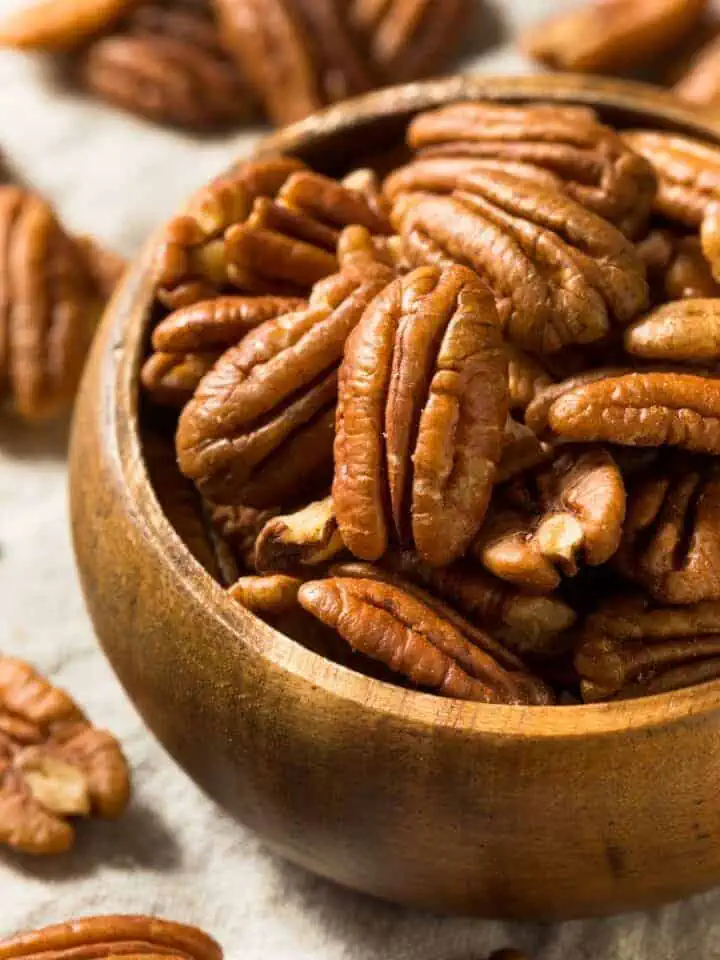Brown butter, also known as beurre noisette (French for "hazelnut butter"), is simply butter that has been cooked until the milk solids are toasted to a slightly sweet, nutty, golden brown color. During this process, most of the water content evaporates, concentrating the butter's flavor.
Use brown butter in baked goods like banana chocolate chip cookies or brown butter chocolate cookies or drizzle over fried eggs, veggies, meat, or seafood.

How to Make Brown Butter
Note: The full instructions are provided in the recipe card below.
Place the unsalted butter pieces in a light-colored medium saucepan over medium heat. Melt the butter until it begins to brown. It will go through different stages, so pay close attention.
The butter will first foam and sputter, and then you'll start to see some brown bits forming at the bottom of the pan.
This process should take about 3 minutes after the butter has completely melted. As soon as the butter smells nutty and toasted and turns copper in color, reduce the heat to low to prevent burning.
Carefully add the milk powder to the browned butter. Use a flexible spatula to incorporate the milk powder, stirring constantly. Make sure to clean the bottom and sides of the pan to avoid burning the milk powder.
Continue stirring until the mixture turns a deep golden brown, which should take about 1 to 2 minutes.
Immediately transfer it to a heatproof bowl, scraping any extra bits of milk solids from the pan.; this will prevent the residual heat from the pan from continuing to cook the butter and potentially burning it.
Allow the brown butter to cool to room temperature before using it in your recipe.
Camila's Tip: I prefer to leave the browned milk solids in the brown butter for additional flavor. However, if you prefer a smoother texture, you can strain or decant the brown butter to remove the milk solids—the clear fat will still maintain a mild toasted flavor.
Dried whole milk is not necessary to achieve browned butter, but it does lend a rich, deep flavor. In a pinch, substitute non-fat milk powder (the brown butter will not be as flavorful) or leave the milk powder out entirely.
Related Recipes:
Recipe
Brown Butter
Tools
- Medium Saucepan or Skillet
- Wooden Spoon or Heatproof Spatula
- Heat-resistant Bowl or Container
- Optional: Fine Mesh Strainer
Ingredients
- 226 g (2 sticks) unsalted butter , cut into equal-sized pieces
- ¼ cup dry milk powder , optional
Instructions
- Place the unsalted butter pieces in a light-colored medium saucepan over medium heat. Melt the butter until it begins to brown. It will go through different stages, so pay close attention. The butter will first foam and sputter, and then you'll start to see some brown bits forming at the bottom of the pan. This process should take about 3 minutes after the butter has completely melted.
- As soon as the butter smells nutty and toasted and turns copper in color, reduce the heat to low to prevent burning. Carefully add the milk powder to the browned butter. Use a flexible spatula to incorporate the milk powder, stirring constantly. Make sure to clean the bottom and sides of the pan to avoid burning the milk powder.
- Continue stirring until the mixture turns a deep golden brown, which should take about 1 to 2 minutes. Immediately transfer it to a heatproof bowl, scraping any extra bits of milk solids from the pan.; this will prevent the residual heat from the pan from continuing to cook the butter and potentially burning it. Allow the brown butter to cool to room temperature before using it in your recipe.
- Camila's Tip: I prefer to leave the browned milk solids in the brown butter for additional flavor. However, if you prefer a smoother texture, you can strain or decant the brown butter to remove the milk solids—the clear fat will still maintain a mild toasted flavor.
Notes
All nutritional information is based on third-party calculations and is only an estimate. Each recipe and nutritional value will vary depending on the brands you use, measuring methods, and portion sizes per household.








